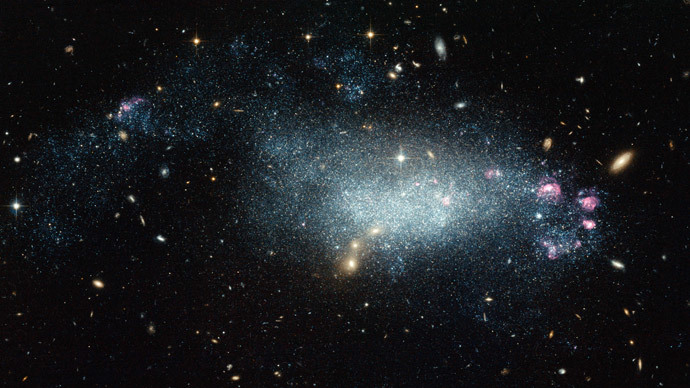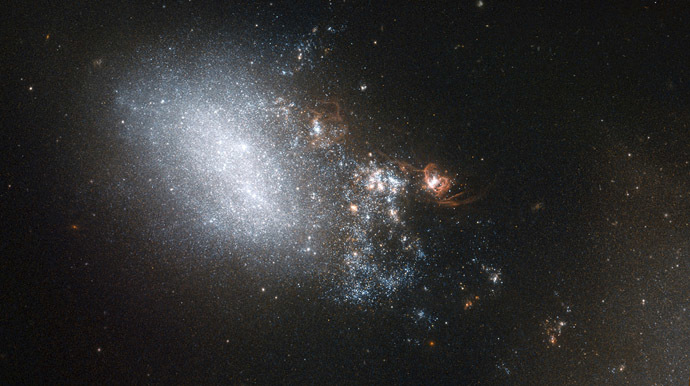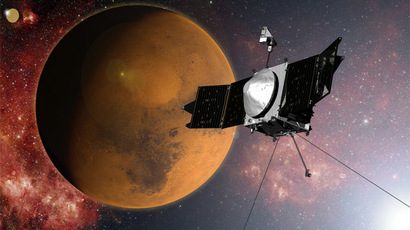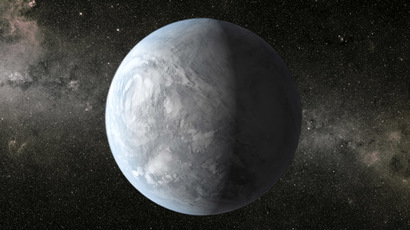Unique organic molecule discovered in deep space

A new kind of organic molecule has been discovered in a giant gas cloud in interstellar space, indicating that more complex molecules – the very core building blocks of life – can potentially form outside of the Earth and even be widespread in space.
The analysis of a star-forming gas cloud some 27,000 light years away from Earth, published in the journal Science, detected an iso-propyl cyanide molecule with a unique structure that is common in life-forming molecules, such as amino acids.
While finding a simple organic chemical in space is nothing new, a carbon-bearing molecule with a branched structure has been discovered for the first time, indicating that biologically crucial molecules can form not only on Earth, but in deep space too.
“This detection suggests that branched carbon-chain molecules may be generally abundant in the ISM [interstellar medium],” the study’s abstract reads.
The scientists – Dr Arnaud Belloche of the Max Planck Institute for Radioastronomy and his colleagues – found the molecule in a gas cloud called Sagittarius B2 – the “star factory” near the center of the Milky Way where many new stars are formed.
The team used the 12 telescopes of the Atacama Large Millimeter/submillimeter Array (ALMA), in Chile, to make its observations.

“Amino acids on Earth are the building blocks of proteins, and proteins are very important for life as we know it. The question in the background is: is there life somewhere else in the galaxy?” Belloche told the BBC.
“Our goal is to search for new complex organic molecules in the interstellar medium,” he said.
And the evidence suggests their presence could actually be widespread.
“The enormous abundance of iso-propyl cyanide suggests that branched molecules may in fact be the rule, rather than the exception, in the interstellar medium,” stated Robin Garrod, an astrochemist at Cornell University and a co-author of the paper, according to astrobiology.com.
Previously discovered organic molecules, like vinyl alcohol and ethyl formate, all shared a major structural characteristic: the atom carbons they consist of are arranged in one, more or less, straight line. So the finding of iso-propyl cyanide – the largest and most complex molecule discovered to date – is significant according to a Cardiff university astronomy professor.
“There seems to be quite a lot of it, which would indicate that this more complex organic structure is possibly very common, maybe even the norm, when it comes to simple organic molecules in space,” Professor Matt Griffin, head of the school of physics and astronomy at Cardiff University said.
The finding is already a breakthrough, but what scientists really hope to discover is actual amino acids.
“It's a step closer to discovering molecules that can be regarded as the building blocks or the precursors… of amino acids,” Griffin said.














